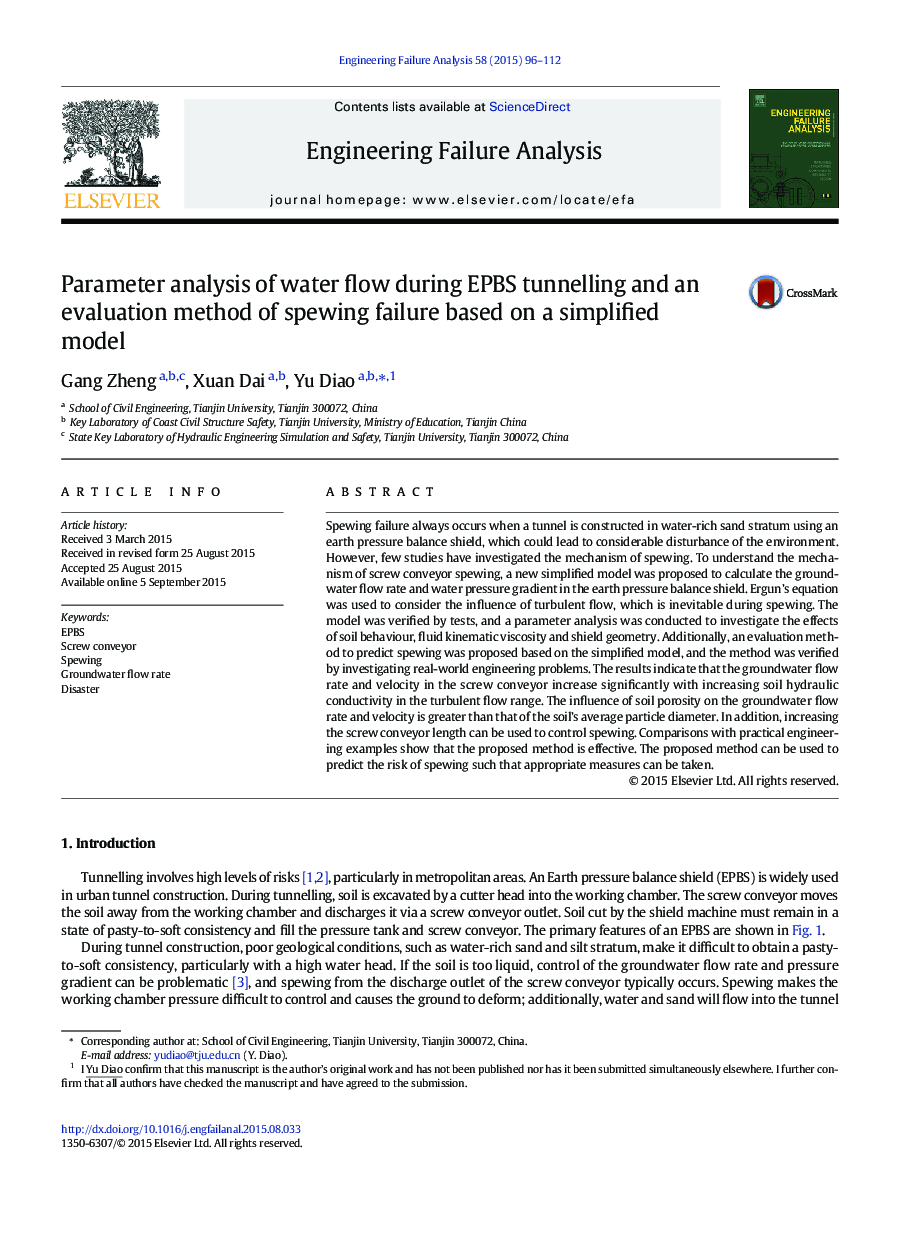| کد مقاله | کد نشریه | سال انتشار | مقاله انگلیسی | نسخه تمام متن |
|---|---|---|---|---|
| 769315 | 897382 | 2015 | 17 صفحه PDF | دانلود رایگان |

• A new simplified model to research the spewing failure mechanism during the tunnel construction process was proposed.
• The analysis of interaction between soil and groundwater in earth pressure balance shield from the range of laminar flow was developed to the range of turbulent flow.
• Three basic mechanisms of soil conditioning were achieved from the parameter analysis based on the proposed model.
• An evaluation method was proposed to predict the occurrence of spewing, and some typical spewing failure accidents were presented and analysed.
Spewing failure always occurs when a tunnel is constructed in water-rich sand stratum using an earth pressure balance shield, which could lead to considerable disturbance of the environment. However, few studies have investigated the mechanism of spewing. To understand the mechanism of screw conveyor spewing, a new simplified model was proposed to calculate the groundwater flow rate and water pressure gradient in the earth pressure balance shield. Ergun’s equation was used to consider the influence of turbulent flow, which is inevitable during spewing. The model was verified by tests, and a parameter analysis was conducted to investigate the effects of soil behaviour, fluid kinematic viscosity and shield geometry. Additionally, an evaluation method to predict spewing was proposed based on the simplified model, and the method was verified by investigating real-world engineering problems. The results indicate that the groundwater flow rate and velocity in the screw conveyor increase significantly with increasing soil hydraulic conductivity in the turbulent flow range. The influence of soil porosity on the groundwater flow rate and velocity is greater than that of the soil’s average particle diameter. In addition, increasing the screw conveyor length can be used to control spewing. Comparisons with practical engineering examples show that the proposed method is effective. The proposed method can be used to predict the risk of spewing such that appropriate measures can be taken.
Journal: Engineering Failure Analysis - Volume 58, Part 1, December 2015, Pages 96–112